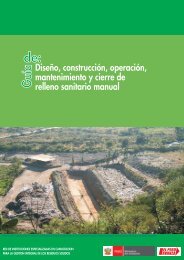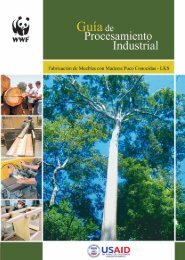You also want an ePaper? Increase the reach of your titles
YUMPU automatically turns print PDFs into web optimized ePapers that Google loves.
I1904.]<br />
Bandelier, Ancient Peruvizam Burials.<br />
225<br />
Island of Titicaca abandoned that island after the first appearance<br />
of the Spaniards, they still continued, during the sixteenth<br />
century and part of the seventeenth, to practice their ancient<br />
rites on it from time to time in secret.' Elsewhere I have<br />
called attention to this, stating that many of the burials there<br />
are not pre-conquistorial. This applies, naturally, not merely<br />
to corpses, but to all the objects in the graves. While investigating<br />
the ancient dwellings called Chullpas in northern<br />
central Bolivia, we were repeatedly informed of very recent<br />
burials in them, to which the Indians resorted in order to<br />
avoid exorbitant (and illegal) burial charges. Cave burials<br />
on the eastern slope of the Bolivian Cordillera, around Pelechuco<br />
and Charassani for instance, in fact, any burial in caves<br />
or cliffs in Peru, Bolivia, and Ecuador (also probably in Chile),<br />
appears chronologically doubtful in the face of the documentary<br />
evidence presented. It becomes difficult, hereafter, to<br />
distinguish pre-Columbian sepultures in those countries from<br />
post-Columbian. This does not affect the manner of burial,<br />
since it was always performed according to primitive custom,<br />
but its relative Antiquity. Art and industry of the Indians<br />
did not change at once upon contact with Europeans. Their<br />
textiles and, especially, the Pottery, was but slowly and gradually<br />
modified, and many specimens from graves (on the coast,<br />
for instance) may be, while after primitive types, still of comparatively<br />
recent date. It will demand careful scrutiny in<br />
many cases, assisted by documentary research, to ascertain if<br />
a burial is pre-Columbian or not. The deformation of skulls,<br />
common formerly in the Highlands of Peru and Bolivia, and<br />
(although different) also on the coast, is absolutely no criterion.<br />
The Ordinances of the Viceroy Don Francisco de Toledo,<br />
quitaron 6 ciertos id6latras, tan bien curado v aderezado, que parecia estar vivo; porque<br />
tenia el rostro tan lleno, con tan buien color y tez, que no parecia estar muerto, con haber<br />
muchisimos anos que lo estaba. " Even in the case of Mummies of undoubted pre-<br />
Columbian date, the cloth found on and along with them (especially the latter) is<br />
probably more recent than the original burial.<br />
Coronica moralizada (Vol. II, folio 31.) "En las Yslas a contiene su archiociago,<br />
como mayor en la de Titicaca, av gran cantidad de Yndios, 6 fugitivos de la doctrina<br />
6 agraviados de los Corregidores, i Caciques, 6 pescadores para grangerias, i no avra<br />
pocos para asistir a la supersticion de stus idolatrias." (Fol. 78, Cap. XIV.) "A otros<br />
Religiosos cometieron el entrar a doctrinar en las lslas, de que tanto dejamos dicho, que<br />
estan en la gran laguna Titicaca, donde avia gran multitud de Indios; algunos con<br />
titulo de sus labrangas, 6 comercios, muchos por huir de la doctrina, i de el trabajo, otros<br />
por asistir en sus guacas, i adoratorios ac6panando a sus idolos, i todos, 6 los mas, tenian<br />
de cristianos solamente ser bautizados."<br />
Yune, 182-.]








